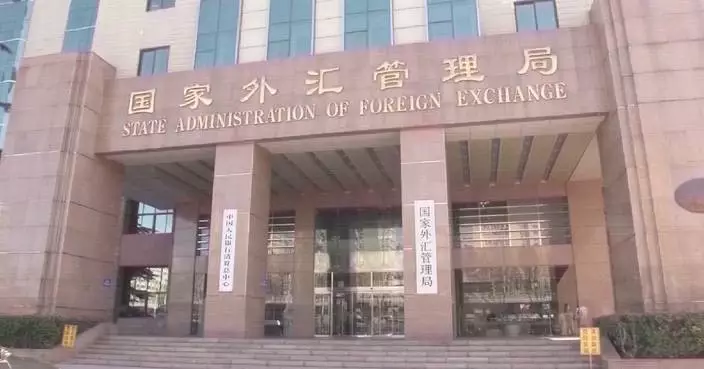The Philippines' recent provocations in the South China Sea are intended to solidify illegal claims and provoke China, while also reflecting the country's internal political motives and concerns about future U.S. support, said a China Media Group (CMG) commentary on Wednesday.
An edited English-language version of the commentary is as follows:
China Coast Guard (CCG) on Wednesday night released a video showing a Philippine official vessel dangerously approaching CCG vessel 3302 in an unprofessional manner, resulting in a collision. On the same day, Philippine coast guard ships, official vessels, and numerous fishing boats intruded into the territorial waters of China's Huangyan Dao.
Just a few days earlier, under the guise of fishing, several Philippine ships had illegally gathered in the waters around China's Nansha Islands, including Houteng Jiao, and they also brought media reporters aiming to hype up the issue. The CCG has taken necessary control measures against the Philippine ships in accordance with laws and regulations. Why has the Philippines initiated a new wave of provocations and disturbances in the South China Sea at this time?
On November 8, Philippine President Ferdinand Romualdez Marcos signed the so-called Philippine Maritime Zones act and the so-called Philippine Archipelagic Sea Lanes act. It has been noticed by the outside world that these acts unlawfully incorporated Huangyan Dao and most of the islands, reefs, and adjacent waters of China's Nansha Qundao into the Philippine maritime zones, attempting to legitimize the illegal ruling of the so-called South China Sea arbitration award through domestic legislation. Within less than a month, the Philippines launched a new round of incursions in the South China Sea, a concrete action aligned with its legislative infringements.
In late November, the United States admitted for the first time that it had deployed a special operations team composed of American soldiers to the Philippines. This development emboldened the Philippine side, prompting more aggressive maritime actions aimed at pursuing multiple objectives.
Analysts pointed out that the Philippines' provocative actions at sea align closely with the Marcos administration's confrontational policies regarding the South China Sea issue.
The primary objective of this policy orientation is to exploit the South China Sea issue in an entangling "dogfight" manner, keeping the topic hot in the realm of public opinion while accumulating material for discrediting China and rendering the so-called "China threat theory".
Chinese government deposited to the United Nations (UN) the Statement on the Baselines of the Territorial Sea Adjacent to Huangyan Dao and the Chart on Monday. This is the performance of China's obligations as a State party to the United Nations Convention on the Law of the Sea and its exercise of sovereignty and administrative jurisdiction over Huangyan Dao. On the same day, the Philippine side intruded the South China Sea again, apparently to test what rights protection and law enforcement measures China will take after releasing the baseline of Huangyan Dao.
Behind this lie the considerations of the Marcos government to divert attention from domestic issues and pursue political self-interest, as well as the Philippine side's motives to solidify illegal gains in the South China Sea and expand its unlawful claims. At the same time, it reflects the Philippines' concerns and anxieties about the future of its relations with the United States. By stirring up trouble in the South China Sea, the Philippines seeks to remind or even "hijack" the United States, hoping that the next U.S. administration will provide more substantial support.
The Philippines' repeated provocations in the South China Sea will exacerbate the management of maritime disputes and strain bilateral relations between China and the Philippines, further complicating the situation in the region. However, these actions can not fundamentally disrupt the peaceful and stable environment in the South China Sea, nor can they undermine the freedom and safety of navigation in the area.
As a responsible major power and the largest coastal state in the South China Sea, China has maintained a consistent and stable principle and position in addressing the South China Sea issue.
China has consistently advocated for resolving disputes in the South China Sea through negotiations and consultations with the countries directly involved. At the same time, China remains fully prepared and aware of the potential escalation of maritime disputes with the Philippines, while steadfastly safeguarding its territorial sovereignty and maritime rights. The Philippines' persistent provocations will inevitably lead to serious consequences, for which it will bear the corresponding costs.
Some countries that have supported the Philippines in escalating tensions over the South China Sea issue have consistently failed to assess the matter based on its merits and historical facts. Instead, they have viewed the issue through a biased lens, applying double standard to discredit China's South China Sea policies. However, these countries do not represent the international community and their actions run counter to the broader ASEAN commitment to peace and stability in the region. By fueling tensions through the provision of lethal weapons, they only encourage further irrational behaviors from the Philippines. Nonetheless, their tricks will have no impact on China's determination to solve the dispute.

Philippines has multiple motives stirring up troubles in South China Sea: commentary









